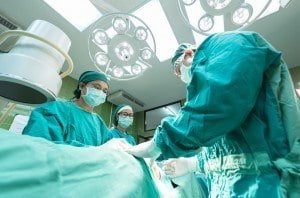LAP-BAND is usually performed in the Outpatient Surgery Center. The patient starts a high-protein low carb liquid diet for 1-2 weeks prior to surgery. The patient is discharged the same day of the procedure and can usually return to work in 3-5 days.
Since there is no cutting, stapling, or stomach re-routing involved in the LAP-BAND System procedure, it is considered the least traumatic of all weight loss surgeries. The laparoscopic approach to the surgery also offers the advantages of reduced post-operative pain, shortened hospital stay and quicker recovery. If for any reason the LAP-BAND System needs to be removed, the stomach generally returns to its original form.
Lap Band Procedure Advantages
Minimal Trauma
- Least invasive surgical option
- No intestinal re-routing
- No cutting or stapling of the stomach wall or bowel
- Reduced pain, hospital length-of-stay, and recovery period
Fewer Risks and Side Effects
- Lower mortality risk than other obesity surgery procedures
- Low risk of nutritional deficiencies associated with gastric bypass
- Reduced risk of hair loss
- No “dumping syndrome” related to dietary intake restrictions
Adjustable
- Allows individualized degree of restriction for ideal, long-term weight loss
- Adjustments performed without additional surgery
- Supports pregnancy by allowing stomach outlet size to be opened for increased
- nutritional needs
Reversible
- Removable
- Stomach and other anatomy are generally restored to their original forms and functions



